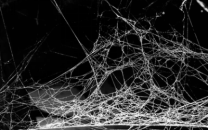
Spider silk is a kind of high-molecular protein fiber with many important excellent characteristics, such as being very small, having high strength, good flexibility and elasticity, strong impact resistance, low-temperature resistance, and can maintain better performance, being friendly to the environment, and so on. Because of these excellent properties, spider silk is widely used. Lifeasible can provide customers with professional technology for developing spider silk fibers. We currently provide the vectors of spider silk preparation genetic engineering technology, including mammals, silkworms, plants, microorganisms, etc.
The silk production of spiders is small, the extraction process is complicated, and they cannibalize their species. They cannot be cultured at high density to obtain a large amount of spider silk, which is difficult to meet the needs of practical applications. Researchers focus on bioengineering methods, that is, transferring the spider silk protein gene into other organisms to express the silk protein, which is then artificially spun. For example, microbes such as Escherichia coli are used to produce this spider silk protein; plants such as tobacco are used to produce spider silk protein; animals such as cows are used to produce spider silk protein; silkworms are used to produce spider silk.
Lifeasible can provide customers with the following types of product development services.
1. Goat's Milk Spider Silk Development
The spider silk protein is transplanted into goat cells, and the milk of the transgenic goat contains the protein that can produce spider silk. Then, using a special solvent, continuous fibers with mechanical strength comparable to real spider silk can be "extracted" from the goat milk.
2. Silkworms Spitting Spider Silk Development
Transgenic technology makes the silk secreted by ordinary silkworms have the same protein composition as spider silk, thus significantly improving the production of spider silk. The method is to inject spider genes into tiny eggs by electroporation so that the cultured silkworms secrete silk containing the spider silk gene.
3. Plant Synthesis of Spider Silk Protein Development
By transplanting genes for synthesizing spider silk proteins into plants such as peanuts, tobacco, and grains, these plants can produce large quantities of spider silk-like proteins, which can then be extracted for spinning.
4. Microbial Synthesis of Spider Silk Development
The microbial expression strategy is to recombine or double different repetitive sequences, obtain spidroin protein through bacterial fermentation, and clone it into an expression vector.
The surface, and cross-section of the spider silk was tested. The solubility of spider silk was also analyzed.
Spider silk is a metabolite of the long-term evolution of spiders. To perform different functions, the composition, structure, and performance of spider silk proteins have been greatly differentiated under various selection pressures. The mechanical properties of spider silk are also affected by many environmental factors, such as temperature and moisture content. Our team can test the mechanical properties of spider silk and analyze the effects of temperature and moisture content on spider silk, such as changes in strength, elasticity, etc.
Spider dragging silk exhibits greater shrinkage in water, and the process is reversible, which is the super-shrinkage property of spider silk. We can analyze the relationship between the super-shrinkage properties and mechanical properties of spider silk and then improve the spidroin protein sequence.
If you are interested in our services, or if you want a service not listed above, please feel free to contact us, and our staff will customize a professional product solution for you.